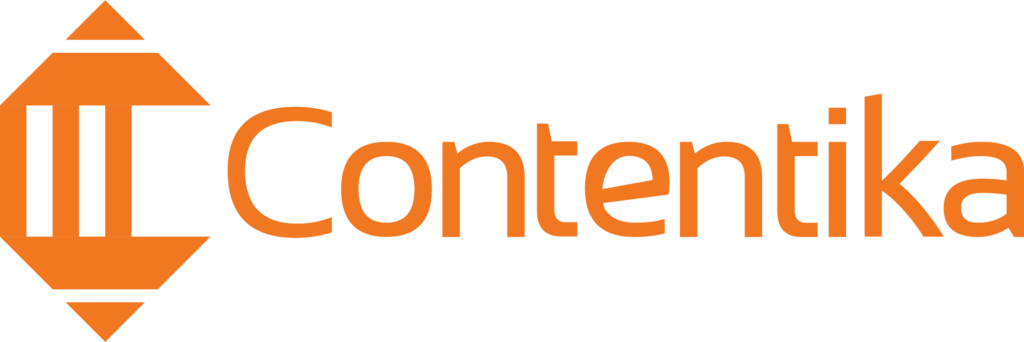What would it do for your business’ publicity if you were quoted in a news story in Forbes, The New York Times, Wall Street Journal, or some other top-tier publication?

For many business owners, getting press is a game-changer. It can help you attract potential customers, get more leads and make sales. But how do you get press? If you’re not actively pursuing it, it will probably not hop into your lap and allow you to stroke it like a furry cat.
There are a lot of strategies to get some press, but one of the most effective (and easiest) is to simply Help A Reporter Out.
Want to know how that works? Well, let’s take a look,
What is Help a Reporter Out?
Help a Reporter Out, or HARO is a service that connects journalists with news sources who can provide expert information and quotes for stories.
Journalists post queries on the HARO website, and sources who have relevant expertise can respond to the query with a quote or comment. If the journalist chooses to use your quote in their story, they will typically include your name and professional description. Plus, they’ll often add a back-link to your website.
In addition, you may also be able to link to the story from your website or blog.
It’s a great way to get your name and your work in the news, and if used consistently, it’s an effective method of building relationships with journalists.
For example, suppose a reporter is writing a story about social media marketing, and you’re a social media expert. In that case, you can respond to their query with a quote or helpful tips. Next time they need a source for a story along similar lines, they’re more likely to think of you and might reach out to you first.
Why do Reporters Use HARO?
That’s a very interesting question, isn’t it?
Reporters, after all, are very good at research and should be able to find experts on their own, right? Well, that’s true. But the thing is, reporters are often on deadlines and frequently juggle many different balls. So while they may know how to find who they need to talk to, they don’t always have the time to track those people down.
That’s only a part of it, though.
Sometimes, reporters use HARO because they’re looking for a fresh take or a new angle on a story. And let’s face it, even the most seasoned reporter can get burned out sometimes and could use some help generating new ideas.
Or, it could just be that the journalist wants to hear from people directly impacted by the topic they’re writing about.
Whatever the reason, if you can help a reporter solve a problem, there’s a good chance they’ll want to hear from you.
And if you can get some press in the process? Well, that’s what we’re after here, isn’t it?
What’s In It for You?
If you’re thinking that helping out a reporter sounds like a lot of work with no guarantee of anything in return, you’re not wrong. It can be a lot of work, and there is no guarantee that the reporter will use your quote or mention you in their article.
However, if you do get chosen, it’s free publicity for you and your business.
Sure, it’s a great feeling to see your name in the news. But there’s more to it, though.
In addition to getting your name and website in front of potential new customers, the press can also help expert sources build credibility in your field.
People will start to see you as an authority if you’re regularly quoted in the news. They’ll be more likely to visit your website, sign up for your email list, and do business with you.
Plus, the SEO rewards down the line can be quite useful.
Quality links from HARO can be extremely beneficial for link-building efforts, resulting in increased traffic and higher search engine rankings. In addition, quality links can also lead to more do-follow links, which are links that allow search engines to follow them and count them as votes for your website.
This can further improve your website’s authority and reach. Finally, quality links can also help build relationships with other websites and businesses, which can lead to additional opportunities down the road
How To Set Up An HARO Account
If you’re ready to get started with HARO, the first thing you need to do is set up an account.
You can sign up for a free account or a paid subscription. There’s no harm in starting with a free account to see how it goes. If you find that you’re getting good results, you can upgrade to a paid subscription later.
To sign up, go to helpareporter.com and input your details.
Once you’ve signed up, all you’ve got to do is check your email.
You’ll start receiving emails containing anything from 10-100 queries three times at 5:45 AM, 12:45 PM, and 5:45 AM (EST) every day, Monday-Friday.
So it’s a good idea to set up a separate email account just for HARO queries so that you don’t miss any and your regular inbox doesn’t get overwhelmed. Alternatively, you can set up a filter in your regular email account so that all the HARO emails go into a separate folder.
How To Find Opportunities
Now that you’re all signed up and receiving query emails, it’s time to start looking for opportunities.
When you open one of the emails, you’ll see a list of queries from reporters.
Take some time to read through the queries and see if any of them are a good match for your expertise.
If you see one that is great! Go ahead and respond.
If not, no worries. Just close the email and move on to the next one.
Remember, you don’t have to respond to every query you receive. Just the ones that are a good match for you.
One way to narrow the list is to look for relevant queries to your business or area of expertise.
For example, if you own a pet store, you want to respond to pet-related queries. If you’re a web developer, you want to respond to web development or technology queries.
The paid subscription also allows you to set up keyword alerts. So if there’s a particular subject matter that you’re an expert at, you can set up an alert and receive an email any time a query containing the relevant keyword is sent out.
Another way to narrow down the list is to look for relevant queries to your geographical area.
For example, if you live in New York City, you would want to respond to queries about New York City. If you live in Los Angeles, you would want to respond to queries about Los Angeles.
How To Respond To A HARO Query: 10 Best Practices
Once you’ve found a query or two that you want to respond to, it’s time to craft your pitch.
When writing your pitch, there are a few things you want to keep in mind:
Be Polite and State Your Credentials
Always open with a greeting and sign off with your name at the end.
Unless the query is anonymous, you should also address the reporter by their first name.
The first sentence of your pitch should contain a summary of who you are and why you are a credible source.
For example: “I’m a web developer in Los Angeles with over ten years of experience.”
This lets the reporter know right away if you’re a good fit for their query.
Don’t Sell; Just Help
The whole point of HARO is to help reporters get the information they need for their stories.
So even though you want to promote yourself and your business, you want to make sure that you’re not making the mistake of trying to sell your products or services.’
Not only will it turn off the reporter, but it also decreases your chances of getting featured. Here’s why: reporters are not advertisers; they’re looking for stories, not sales pitches. If you try to sell them on your product or service, they’ll just tune you out.

The best thing to do here is to focus on helping the reporter and providing an in-depth response that would be useful for their story.
Relevance is Key, And To Both Sides
This one is pretty obvious, isn’t it?
If you’re going to pitch a reporter on why they should use you as a source, you need to make sure that your pitch is relevant to their needs. That means that it’s on the topic that they’re querying about, and it’s something that would be of interest to their readers.
But relevancy goes both ways.

Not only does your pitch need to be relevant to the reporter, but it also needs to be relevant to you and your business.
For example, if you’re an automobile dealer, you wouldn’t want to pitch a reporter on a query about the best fashion clothing for newlyweds. Unless you also own a Gucci luxury item store, of course.
But you get the idea. There’s no point in pitching a query that does not establish you as an expert or authority in your business field.
Do Your Research
Before you start writing your pitch, it’s important to do your research.
That means reading the query carefully and understanding what the reporter is looking for.
It also means researching the outlet that the reporter is writing for.
This will help you to better understand their needs and tailor your pitch accordingly.
It will also help you to make sure that your pitch is a good fit for their outlet and their audience. Now, admittedly this is not always easy or even possible, particularly if the reporter chooses not to include their details.
Nonetheless, it doesn’t hurt to try searching for the journalist’s name and outlet online- when it is included, a simple Google search can reveal quite a bit about them. And then, you can use that information to better understand what they’re looking for and how you can help.
Don’t Point Out The Obvious
When crafting a pitch, it is important to avoid giving common responses and pointing out the obvious in your pitch.
For example, if a journalist is looking for experts on the health benefits of yoga, they’re not going to be interested in hearing from someone who points out that yoga can improve flexibility.
Instead, they want to hear from someone who can offer insights on how yoga can perhaps improve specific health conditions.
Additionally, avoid pitches that simply state the facts. For example, don’t pitch a journalist on a query about the best ways to reduce stress if all you’re going to do is list off some of the obvious methods like meditation and exercise.
Instead, focus on pitching something that is unique or different. For example, you could pitch a journalist on the benefits of using CBD oil to reduce stress and perhaps include some studies or personal experience to back up your claims.
Answer The Question Completely
Sometimes, a query will ask more than one question.
When this happens, it’s important to make sure that you answer all of the questions in your pitch.
For example, if a query asks for tips on how to reduce stress and improve productivity, make sure that your pitch addresses both topics.
Bonus points if you can find a way to tie the two topics together in your pitch.
In short, make sure that you read the query carefully and answer all of the questions that are asked.
Short, Skimmable, Simple, and Sweet
When it comes to your pitch, less is more.
You want to keep it short, sweet, and to the point.
Remember, reporters are busy people who don’t have time to read a novel. Plus, they’re likely receiving dozens, if not hundreds, of pitches for each query.
So you want to make sure that yours stands out and that the reporter can easily see how you can help them.
The last thing you want is for your pitch to end up in the trash because it was too long, rambling, or just plain boring.
You also want to ensure that your pitch is skimmable. That means using short paragraphs, lists, and bullet points.
You want to make it as easy as possible for the reporter to scan your pitch and see how you can help.
If they have to work too hard to find the information they’re looking for, chances are they’re just going to move on to the next pitch.
Finally, you want to make sure that your pitch is simple and easy to understand.
Avoid using jargon or technical terms that the reporter may not be familiar with.
Remember, you’re trying to make their job easier, not harder.
If they can’t understand what you’re trying to say, they’re not going to waste their time trying to figure it out. So keep it simple.
Speed Doesn’t Kill

When responding to queries, always remember that faster is better.
You want to make sure that you’re one of the first people to submit a pitch because the sooner you respond, the more likely your response is going to be noticed by the reporter, and the more likely that it’ll be used.
Of course, this doesn’t mean that you should sacrifice quality for speed. If you do, then you’re most likely on a fast road to nowhere.
You still want to make sure that your pitch is well-crafted and relevant to the query.
But if you can do both, then all the better.
Make Your Pitch Ready To Publish
When you’re done crafting your pitch, it should be ready to publish.
That means that it’s well-written, free of grammar and spelling errors and that it contains all the information that the reporter needs to use you as a source.
If they can just copy and paste your pitch into their article, then you’ve done your job right.
Of course, this doesn’t mean that the reporter will necessarily use your pitch verbatim- but it should give them everything they need to write a great article without having to do a lot of additional work.
And that’s really what you want, isn’t it?
To make the reporter’s job as easy as possible so that they’re more likely to use you as a source.
End With A Call To Action
Lastly, you want to end your pitch with a call to action.
This is simply a sentence or two that tells the reporter what you want them to do next.
For example, you might say, “If you’re interested in using me as a source, please contact me at [your email address] and I’ll be happy to provide additional information.”
A call to action is important because it helps move the reporter from simply considering you as a source to actually using you as one.
The Non-Negotiables
Now let’s take a look at some things your HARO pitch should never contain.
First and foremost, never, ever include any sort of attachments with your pitch.
This includes images, videos, documents- anything. This is against the rules of HARO and the attachment will be stripped from your email before it ever reaches the reporter. So don’t bother including them.
Secondly, and very importantly, never demand for backlinks in your pitch.
This is a big no-no and it will likely get you banned from HARO altogether, immediately.
I can almost hear you groan out the question, “But I’m here for the backlinks, aren’t I?’
Well, you see, that’s the thing. You’re not here for the backlinks. You’re here to help the reporter out by providing them with great sources that they can use in their articles.
If you focus on doing that, then the backlinks will come naturally.
But how? The trick is to hope the reporter will give you a backlink even without you demanding for one. And in most cases, they will- especially if you’ve been a very helpful source for them.
To reiterate the point simply, it’s against the rules to demand for a backlink but it’s not an offence to get one. And journalists are generally happy to give backlinks to good sources.
In any case, you’ll still get your media placement and your name/brand will still be mentioned in the article, even if without a backlink.
So it’s really not worth risking your HARO account over something like this.
Post-Pitch Practices: Dos and Don’ts
So, you’ve submitted your well-crafted response to a pitch. Now, what do you do next? Do you just sit back and wait for the reporter to contact you? Or do you take some additional steps to ensure that your pitch gets noticed? Say, through social media or email.
Actually, the right answer is to sit back and wait for the reporter to contact you.
You see, no one likes a pest. And if you go around sending follow-up messages to the reporters after you’ve sent your pitch, that’s what you’re in danger of becoming.
Just imagine what would happen if every reporter started getting a follow-up message from everyone who pitched to them. That’s a pest infestation, isn’t it?

So, the best thing to do is just sit back and wait to see if the reporter is interested in using you as a source.
One other thing to avoid is expecting immediate results. Just because you’ve sent a pitch doesn’t mean that the reporter will use it immediately. It could be weeks or even months before they actually get around to writing the article. So don’t get discouraged if you don’t hear back right away. Just keep moving on and pitching to other reporters.
However, you’re free to keep an eye on the news outlet where the article is being published to see if your pitch was used.
If it was, then congratulations! You did it! Now, you can share it on your social media channels and publicize it as much as you want. You can also send a “thank you” message to the reporter.
But if your pitch wasn’t used, don’t get discouraged. Just keep pitching, and eventually, you’ll get results.
Besides, even if your pitch wasn’t used this time, that doesn’t mean it won’t be used in the future.
Reporters often save pitches that they don’t use right away for future articles. So even if you don’t see your pitch in the article, it doesn’t mean it won’t be used later down the road.
Conclusion
HARO is a great tool for anyone looking to get free press for their business or themselves. But like anything else, it takes time and effort to succeed at it. So if you’re willing to do the work, following the tips mentioned in this guide makes things easier for you. Now, go out there and start pitching!
If you’re not interested in doing the work, that’s fine too. That doesn’t mean you have to miss out on the benefits HARO offers. Several freelancers and agencies can craft wonderful pitches on your behalf and get you the results that you’re looking for. Do some research and find one you think is a good fit for you and your business.
Also, do not put all your eggs in one basket. For one, you can use several HARO alternatives to widen your scope and reach. Just be sure you can manage them effectively and be consistent with your platforms.
And in due time, you’ll surely get to see some of that free press rolling in and improving your brand’s reputation and credibility.
FAQ
To get great results with HARO. Do the following
1. Answer queries speedily.
2. Provide relevant and concise answers
3. Never try to be salesy
4. Be polite to the journalist
5. Make sure your response is ready to be published
HARO’s purpose is to connect journalists with sources for their stories. It’s a win-win situation for both parties involved. The reporter gets the information they need and the source gets publicity for their business or themselves.
You should check your HARO account at least three times a day. This ensures that you don’t miss any opportunities and that you’re able to answer queries quickly.
HARO is a free service. Both journalists and sources can sign up and use it without having to pay anything. However, there is a premium version that offers additional features for a fee. Sources can use the premium service to get access to more specific opportunities and have a headstart on others.
The HARO technique is a way to build backlinks to your website. It involves responding to queries on HARO and the journalist including a link to your website in their work. This is a great way to get high-quality backlinks from authority websites.












